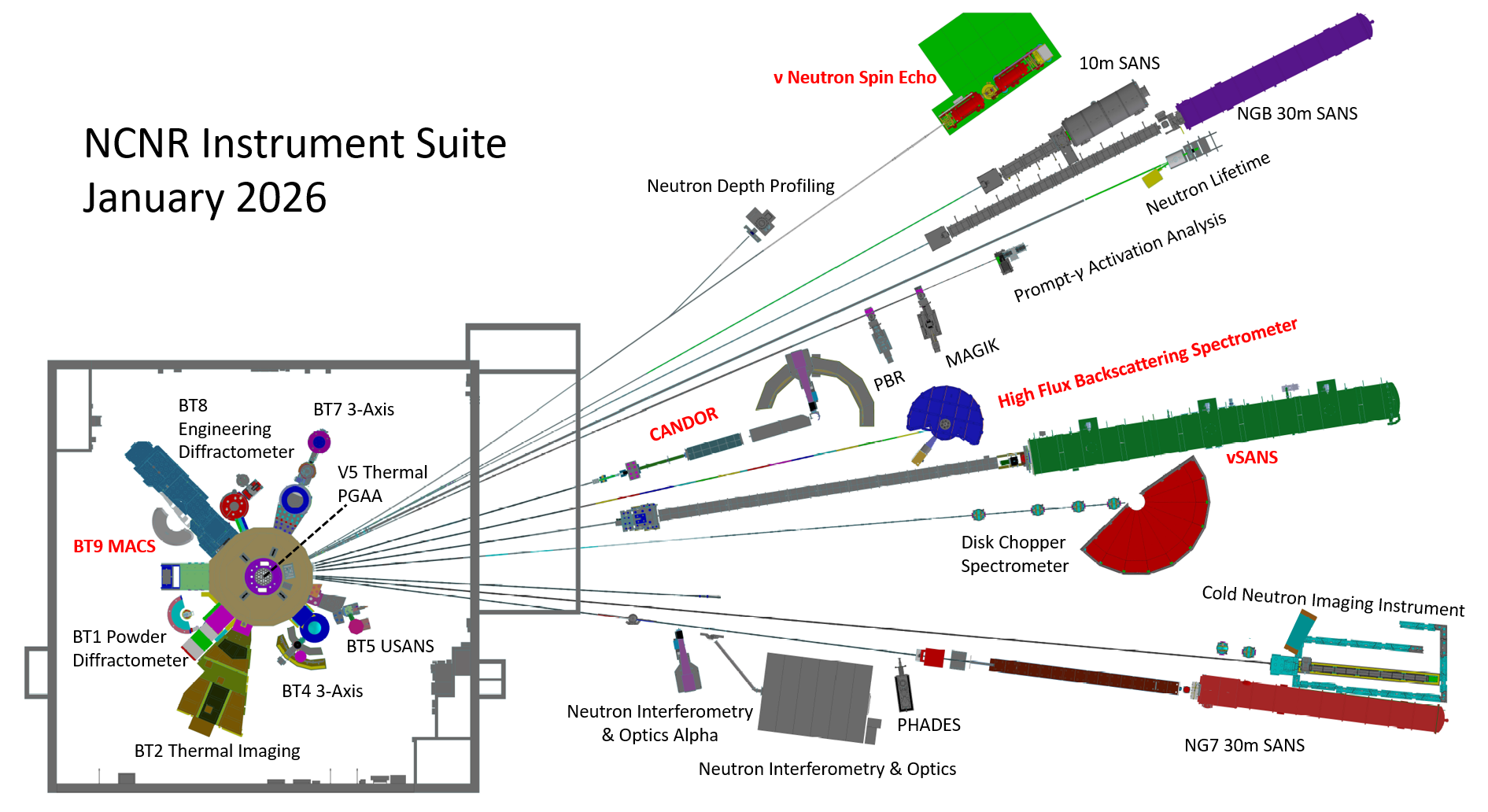Instrument Layout

Confinement building
- BT1 - High Resolution Powder Diffractometer
- BT2 - Neutron Imaging Facility
- BT4 - Triple Axis Spectrometer
- BT5 - Ultra Small Angle Neutron Scattering (USANS)
- BT7 - Double Focusing Triple-Axis Spectrometer
- BT8 - Diffractometer for Stress & Texture
- BT9 - CHRNS Multi Angle Crystal Spectrometer (MACS)
- VT5 Thermal Prompt Gamma Activation Analysis
guide hall
- NGA' - Cold Neutron Depth Profiling
- NGA - CHRNS New Neutron Spin Echo spectrometer (v-NSE)
- NGB - 10 m Small Angle Neutron Scattering (10m SANS)
- NGB - 30 m Small Angle Scattering (NGB 30m SANS)
- NGC - Neutron Lifetime
- NGD- Monochromatic Reflectometer (PBR)
- NGD- Monochromatic Reflectometer (MAGIK)
- NGD- Cold Prompt-Gamma Neutron Activation Analysis (PGAA)
- NG1 - CHRNS White beam reflectometer (CANDOR)
- NG2 - CHRNS High flux Backscattering Spectrometer (HFBS)
- NG3 - CHRNS Very Small Angle Neutron Scattering (vSANS)
- NG4 - Disk Chopper Spectrometer (DCS)
- NG6 - Cold Neutron Imaging Instrument (CNII)
- NG7 - Neutron Interferometry & Optics Facility Alpha (NIOFa)
- NG7 - Neutron Interferometry & Optics Facility (NIOF)
- NG7 - Test Station (PHADES)
- NG7 - 30 m Amall Angle Neutron Scattering (NG7 30m SANS)
Created April 20, 2017, Updated September 17, 2025

